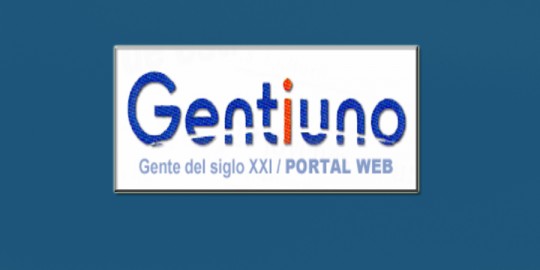The Teslergenesis platform represents a new class of web-based financial technologies that aim to apply artificial intelligence (AI) to the automation of cryptocurrency trading. This article offers a science-based analysis of the project’s technical premise, market alignment, system architecture, and growth potential. Special attention is given to algorithmic design, automation trends, and the implications for retail investors seeking entry into the increasingly complex world of digital asset markets.
1. Introduction to Teslergenesis: Context and Objectives
Teslergenesis is an AI-assisted trading automation platform designed for use in the cryptocurrency sector. Unlike blockchain protocols that introduce native tokens or decentralized infrastructure, Teslergenesis operates exclusively as a software-as-a-service (SaaS) interface, accessible via standard web browsers. Its core functionality centers on real-time market analysis, pattern recognition, and autonomous execution of trades.
The platform’s goal is to lower the barriers to participation in algorithmic trading by eliminating the need for technical configuration, manual decision-making, or programming knowledge. This design philosophy is aligned with the broader democratization trend in financial technologies, particularly among retail market participants.
2. The Automation Landscape: Market Need and Adoption
The demand for automated trading systems has grown significantly since the mid-2010s. According to data from Statista, approximately 58% of active cryptocurrency traders used some form of automated or semi-automated trading by 2024. This trend is driven by several factors:
-
The 24/7 nature of cryptocurrency markets
-
High-frequency volatility
-
Complex product offerings (e.g., derivatives, DeFi instruments)
-
Cognitive and behavioral limitations in manual trading
Teslergenesis enters this landscape with a focus on accessibility, positioning itself as an entry-level tool for users with limited technical knowledge and moderate investment capacity. Target users include casual investors with portfolios in the range of $500 to $5,000, and individuals located in regions with minimal onboarding friction or regulatory complexity.
3. Functional State and Technical Development
As of August 2025, Teslergenesis is deployed in a semi-public beta format, often referred to in the technology development cycle as a Minimum Viable Product (MVP). The user interface is entirely browser-based and does not require installation, wallet integration, or capital deposit to access core features.
While no detailed user adoption metrics have been disclosed, the limited availability of UX customization, mobile application support, and advanced reporting functions suggests that the platform remains in an early validation stage.
4. AI Integration and Algorithmic Design
The defining feature of Teslergenesis is its claim to utilize AI algorithms for real-time scanning and execution of cryptocurrency trades. Although the platform does not currently offer a technical whitepaper or published description of its models, public statements imply that its systems are trained on historical price data, market depth metrics, and possibly unstructured textual data such as news feeds.
If the underlying architecture employs standard supervised machine learning models—including regression trees or Support Vector Machines (SVMs)—then prediction accuracy may be constrained by the stochastic nature of crypto markets. However, the use of Large Language Models (LLMs) or anomaly detection techniques may allow for context-sensitive signal generation and higher time-based relevance.
Without empirical validation or peer-reviewed evaluation, the AI functionality remains a non-transparent black box, which should be approached with methodological caution in any investment or advisory context.
5. Global Reception and Use Case Distribution
Recent increases in mentions of Teslergenesis on digital forums, including Telegram groups and Reddit channels, suggest a rising level of user interest. This is particularly notable in regions with historically low access to traditional financial services, such as Latin America, Southeast Asia, and parts of Eastern Europe.
The platform’s features—no registration fees, minimal onboarding requirements, and fast withdrawal claims—are designed to meet the liquidity and trust demands of these user segments. From a user adoption standpoint, the service may fulfill a practical need in underserved markets lacking robust fintech infrastructure.
6. Intended Audience and Applicability
Teslergenesis appears to serve a narrowly defined demographic profile:
-
Inexperienced crypto users seeking guided entry into algorithmic trading
-
Intermediate holders with a preference for passive capital deployment
-
Non-technical individuals requiring low-complexity interfaces
-
Risk-averse users interested in testing automation without financial lock-in
The platform is not appropriate for:
-
Professional algorithmic traders
-
Institutions requiring API integrations and deep analytics
-
Regulatory-compliant entities with strict KYC obligations
-
Users seeking transparency in AI model governance
7. Evaluation: Strengths and Limitations
Advantages
-
Accessible on all modern browsers (no installation)
-
Low entry threshold; no capital required for initial use
-
Streamlined interface for fast onboarding
-
Claimed 24-hour withdrawal processing
-
Geographic adaptability with a presence in multiple continents
Constraints
-
No published AI architecture or validation data
-
Absence of mobile app limits device compatibility
-
Limited strategy personalization
-
Unclear legal and regulatory compliance framework
-
Inadequate for professional or institutional trading environments
8. Conclusion: Scientific Outlook and Future Research Directions
Teslergenesis exemplifies the broader movement toward AI-enhanced financial tools for non-specialist users. While the platform presents a usable MVP and aligns with real-world market demand, its lack of transparency regarding algorithmic operations and technical oversight currently limits its credibility within scientific or institutional circles.
Further development should focus on:
-
Publishing a formal technical whitepaper
-
Offering model validation metrics and stress-testing protocols
-
Providing user-level data privacy guarantees
-
Expanding mobile access and platform integrations
-
Addressing regional compliance standards across jurisdictions
Suggested Research Rating: 7.5/10
This rating reflects the platform’s early-stage utility, alignment with automation trends, and potential to evolve into a full-featured trading assistant for retail adoption. However, the current absence of academic or regulatory validation places Teslergenesis in the category of exploratory digital finance technologies.
Access the official platform at: https://teslergenesis.ca

